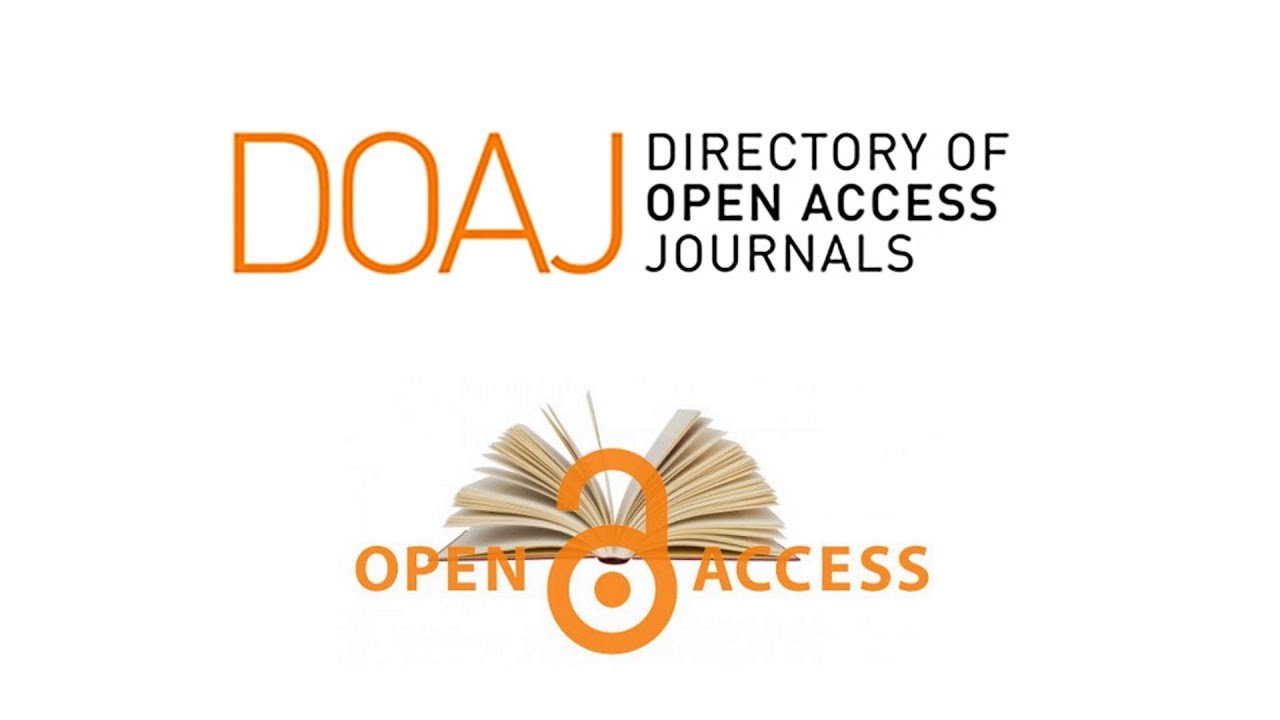Possibility of cultivation gray mangroves Avaccinnia marina (Forsk.) Vierh. in the Iraqi coasts
DOI:
https://doi.org/10.58629/ijaq.v20i1.453Keywords:
Gray mangrove, Avicennia marina, Khor Al-Zubair, vegetation, mangrove community, biodiversityAbstract
A team from Marine Science Centre/ University of Basrah, in cooperation with some regional and local scientific institutions, attempted to cultivate the mangrove Avicennia marina in some Iraqi coastal areas, as part of an experiment that is the first of its kind in the country. A site was chosen to plant these trees in the tidal zone in the Khor Al-Zubair oil port. After six months of seedling growth in the greenhouse, the seedlings were transferred to the test site, and measurements of plant growth indicators were carried out for two years at the test site for the period from April 2019 to April 2021. The maximum height of the plants during the study period was 173.3 cm, while The indicators of vegetative growth and chlorophyll content increased significantly during the study period, which is close to the growth of trees in their natural habitats. The survival rates of seedlings were 44% after 24 months of planting. Most of the results were compared according to the Least Significant Difference test (L.S.D.). At a probability level of 0.05.Metrics
References
AboEl-Nil M.M., (2001). Growth and establishment of mangrove (Avicennia marina) on the coastlines of Kuwait. Wetl. Ecol. Manag. 9: 421–428. DOI: 10.1023/A:1012098525918.
Abou-Seida, M.M., and Al-Sarawi, M.A. (1990). Utilization and management of coastal areas in Kuwait. Coast. Manage., 18(4): 385-401. DOI: 10.1080/08920759009362122.
Ali, M.H.; Al-Mudaffar, N.; Mohammed, H.H.; Helmuth, B. and Dwyer, A. (2021). Winners and losers: Post conflict biodiversity in the stressed ecosystem of Khor Al-Zubair, Iraq. Pak. J. Mar. Sci., 30(2): 76-95. URI: hdl.handle.net/1834/42004.
Almahasheer, H.; Al-Taisan, W. and Mohamed, M.K. (2013). Mangrove deterioration in Tarut Bay on the eastern province of the Kingdom of Saudi Arabia. Pakhtunkhwa J. Life Sci., 1(02): 49-59.
Al-Maslamani, I.; Walton, M.E.M.; Kennedy, H.A.; Al-Mohannadi, M. and Le Vay, L. (2013). Are mangroves in arid environments isolated systems? Life-history and evidence of dietary contribution from in welling in a mangrove-resident shrimp species. Estuar. Coast. Shelf Sci., 124: 56-63. DOI: 10.1016/j.ecss.2013.03.007 .
Al-Nafisi, R.S.; Al-Ghadban, A.; Gharib, I. and Bhat, N.R. (2009). Positive impacts of mangrove plantations on Kuwait's coastal environment. Eur. J. Sci. Res., 26(4): 510-521.
Al-Zayani, A.K. (1993). Development of coastal environment with mangrove for the Gulf countries. Conference of desertification and land relamation in Gulf Council Countries. Arabian Gulf Univ., Bahrain. p. 22 (In Arabic).
Aronson, J. (1985). Economic halophytes — a global review. In: Wickens, G.E., Goodin, J.R., Field, D.V. (eds) Plants for Arid Lands. Springer, Dordrecht. DOI: 10.1007/978-94-011-6830-4_13.
Arreola-Lizárraga, J.A.; Flores-Verdugo, F.J. and Ortega-Rubio, A. (2004). Structure and litterfall of an arid mangrove stand on the Gulf of California, Mexico. Aquat. Bot., 79(2): 137-143. DOI: 10.1016/j.aquabot.2004.01.012.
Austin, M.P. and Heyligers, P.C. (1989). Vegetation survey design for conservation: gradsect sampling of forests in north-eastern New SouthWales. Biol.Conserv., 50(1-4): 13-32. DOI: 10.10- 16/0006-3207(89)90003-7.
Baas, A.C. (2002). Chaos, fractals and self-organization in coastal geomorphology: simulating dune landscapes in vegetated environments. Geomorphology, 48(1-3): 309-328. DOI: doi.- org/10.1016/S0169-555X(02)00187-3.
Bosire, J.O.; Dahdouh-Guebas, F.; Walton, M.; Crona, B.I.; Lewis Iii, R.R.; Field, C. and Koedam, N. (2008). Functionality of restored mangroves: a review. Aquat. Bot., 89(2): 251-259. DOI:10.1016/j.-aquabot.2008.03.010.
Bosold, A.L. (2012). Challenging the “man” in mangroves: the missing role of women in mangrove conservation.
Bouillon, S.; Dahdouh-Guebas, F.; Rao, A. V. V. S.; Koedam, N. and Dehairs, F. (2003). Sources of organic carbon in mangrove sediments: variability and possible ecological imply-cations. Hydrobiologia, 495(1): 33-39. DOI:10.1023/A:102541150-6526.
Chowdhury, M.S.N.; Hossain, M.S.; Mitra, A. and Barua, P. (2011). Environmental functions of the Teknaf Peninsula mangroves of Bangladesh to communicate the values of goods and services. Mesop. J. Mar. Sci., 26(1): 79-97.
Clarke, P.J. and Allaway, W.G. (1993). The regeneration niche of the grey mangrove (Avicennia marina): effects of salinity, light and sediment factors on establishment, growth and survival in the field. Oecologia, 93(4): 548-556. DOI: 10.1007/BF00- 328964.
Corral, L. (1983). Vegetation. In: Clayton, D. (ed.), Kuwait’s Natural History, pp. 24–66. Kuwait Oil Company, Kuwait.
Dean, R.G. and C.J. Bender. (2006). Static wave setup with emphasis on damping effects by vegetation and bottom friction. Coast. Eng., 53(2-3): 149–156. DOI: 10.1016/j.coastaleng.200-5.10.005.
Embabi, N.S. (1993). Environmental aspects of geographical distribution of mangrove in the United Arab Emirates. In: Lieth, H.; Al Masoom, A.A. (eds) Towards the rational use of high salinity tolerant plants. Tasks Veg. Sci., vol. 27. Springer, Dordrecht. DOI: 10.1007/978-94-011-1858-3_5.
Erftemeijer, P.L.; Wylie, N. and Hooper, G.J. (2017). Successful mangrove establishment along an artificially created tidal creek at Port Hedland, Western Australia. Mar. Freshw. Res., 69(1): 134-143. DOI: 10.1071/MF17139.
FAO, (Food and Agriculture Organization of the United Nations) (2007). The World's Mangroves 1980-2005. FAO Forestry Paper No. 153. Rome, Forest Resources Division, FAO.77.
Field, C.D. (Ed.) (1996). Restoration of Mangrove Ecosystems. International Society for Mangrove Ecosystems, Okinawa, Japan. 250 pp.
Firmin, R. (1968). Forestry Trials with Highly Saline or Sea-water in Kuwait. In: Boyko H. (eds) Saline Irrigation for Agriculture and Forestry. World Acad. Art Sci., 4: 107-132 Springer, Dordrecht. DOI: 10.1007/978-94-017-6016-4_9.
Firmin, R. (1968). Forestry Trials with Highly Saline or Sea-water in Kuwait. In: Boyko H. (eds) Saline Irrigation for Agriculture and Forestry. World Acad. Art Sci., 4: 107-132 Springer, Dordrecht. DOI: 10.1007/978-94-017-6016-4_9.
Fouda, M.M., and AI-Muharrami, M.A. (1996). Significance of mangroves in the arid environment of the Sultanate of Oman. J. Agric. Mar. Sci., 1: 41-49.
Ghowail, S.I.; Abdel-Monem, A.M.; El-Ghamry, W. M. and Saber, N.E. (1993). Preliminary studies on the effect of different salinity levels on germination, growth and anatomy of mangrove (Avicennia marina). In Towards the rational use of high salinity tolerant plants, vol. 1, (pp. 237-244). Springer, Dordrecht. https://doi.org- /10.1007/978-94-011-1858-3_25.
Guisan, A., and Thuiller, W. (2005). Predicting species distribution: offering more than simple habitat models. Ecol. letters, 8(9): 993-1009. DOI: 10.1111/j.1461-0248.2005.00792.x.
Halpern, B. S.; Walbridge, S.; Selkoe, K.A.; Kappel, C.V.; Micheli, F.; d'Agrosa, C.; ... and Watson, R. (2008). A global map of human impact on marine ecosystems. Science, 319(5865): 948-952. DOI: 10.1126/science.1149345.
Ismail, N.S. and Ahmed, M.A. (1993). Macrobenthic invertebrates of mangrove, Avicennia marina (Forskal), and of intertidal flats of Khor Kalba, U.A.E., Gulf of Oman. In: Lieth, H. and Al-Masoom, A.A. (eds.), Towards the Rational Use of High Salinity Tolerant Plants, 1: 155-161. Kluwer Academic Publishers, Dordrecht. DOI: 10.1007/978-94-011-1858-3_16.
Khan, M.I.R. (1982). Mangrove forest of the United Arab Emirates. Pak. J. For., 32(2): 36–39.
Kogo, M. and Tsuruda, K. (1996). Species selection for mangrove planting: a case study of Ras al Khafi, Saudi Arabia. In: Field, C.D. (ed.), Restoration of Mangrove Ecosystems. The International Society for Mangrove Ecosystem, Okinawa, Japan.
Lee, T.M. (2005). Monitoring the dynamics of coastal vegetation in Southwestern Taiwan. Environ. Monit. Assess., 111(1): 307-323. DOI: 10.1007/s10661-005-0209-8.
Mendez, F.J. and Losada, I.J. (2004). An empirical model to estimate the propagation of random breaking and nonbreaking waves over vegetation fields. Coast. Eng., 51(2): 103-118. DOI: 10.1016/j.-coastaleng.2003.11.003.
MOD (Main Outfall Drain) (2008). Ministry of Water Resources, Main Outfall Drain Office, Baghdad, Iraq.(Unpublished Report).
Mohammad, H.H. and Ali, M.H. (2022). Birds of Umm Qasr and Khor Al-Zubair’s Intertidal mudflats. Directorate of Dar Al-Kutub for Printing and Publishing-University of Basrah, Bab Al-Zubair Complex, Basrah, Iraq. 112 pp.
Pauly, D. and Ingles, J. (1986). The relationship between shrimp yield and intertidal vegetation (mangrove) areas: A reassessment. In: Yanez-Arancibia, A. and Pauly, D. (eds.), IOC/FAO Workshop on Recruitment in Tropical Coastal Demersal Communities, pp. 277–283, Intergovernmantal Oceanographic Commission Workshop Report 44 Supplement, UNESCO, Paris.
Saenger, P.; Heger, E.J. and Davie, J.D.S. (1983). Global Status of Mangrove Ecosystem. Commission on Ecology Paper No. 3, Int. Union Conserv. Nature Nat. Resour., Switzerland.
Snedaker, S.C. (1984). Mangrove: A summary of knowledge with emphasis on Pakistan. In: Haq, B.U. and Milliman, J.D. (eds.), Marine Geology and Oceanography of Arabian Sea and Coastal Pakistan, pp. 255–262. Van Nostrand Reinhold Co., New York.
Staples, D.J.; Vance, D.J. and Heales, D. S. (1985). Habitat requirements of juvenile penaeid prawns and their relationship to offshore fisheries. In: Rothlisberg, P.C., Hill, B.J. and Staples, D.J. (eds.), Second Australian National Prawn Seminar, pp. 47–54, Australia. DOI:102.100.100/278591?index=1.
Stawarczyk, M. and Stawarczyk, K. (2015). Use of the ImageJ program to assess the damage of plants by snails. Chem.-Didactics-Ecol.-Metrol., 20(NR 1-2): 67-73. DOI: 10.1515/cdem-2015-0007.
Thampanya, U.; Vermaat, J.E. and Duarte, C.M. (2002). Colonization success of common Thai mangrove species as a function of shelter from water movement. Mar. Ecol. Prog. Ser., 237: 111-120. DOI: 10.3354/meps237111.
Toledo, G.; Rojas, A. aand Bashan, Y. (2001). Monitoring of black mangrove restoration with nursery-reared seedlings on an arid coastal lagoon. Hydrobiologia, 444(1): 101-109.
Türker, U.; Yagci, O. and Kabdaşlı, M.S. (2006). Analysis of coastal damage of a beach profile under the protection of emergent vegetation. Ocean Eng., 33(5-6): 810-828. https://doi.org/10.101- 6/j.oceaneng.2005.04.019.
Downloads
Published
How to Cite
Issue
Section
License
Copyright (c) 2023 Iraqi Journal of Aquaculture

This work is licensed under a Creative Commons Attribution 4.0 International License.










